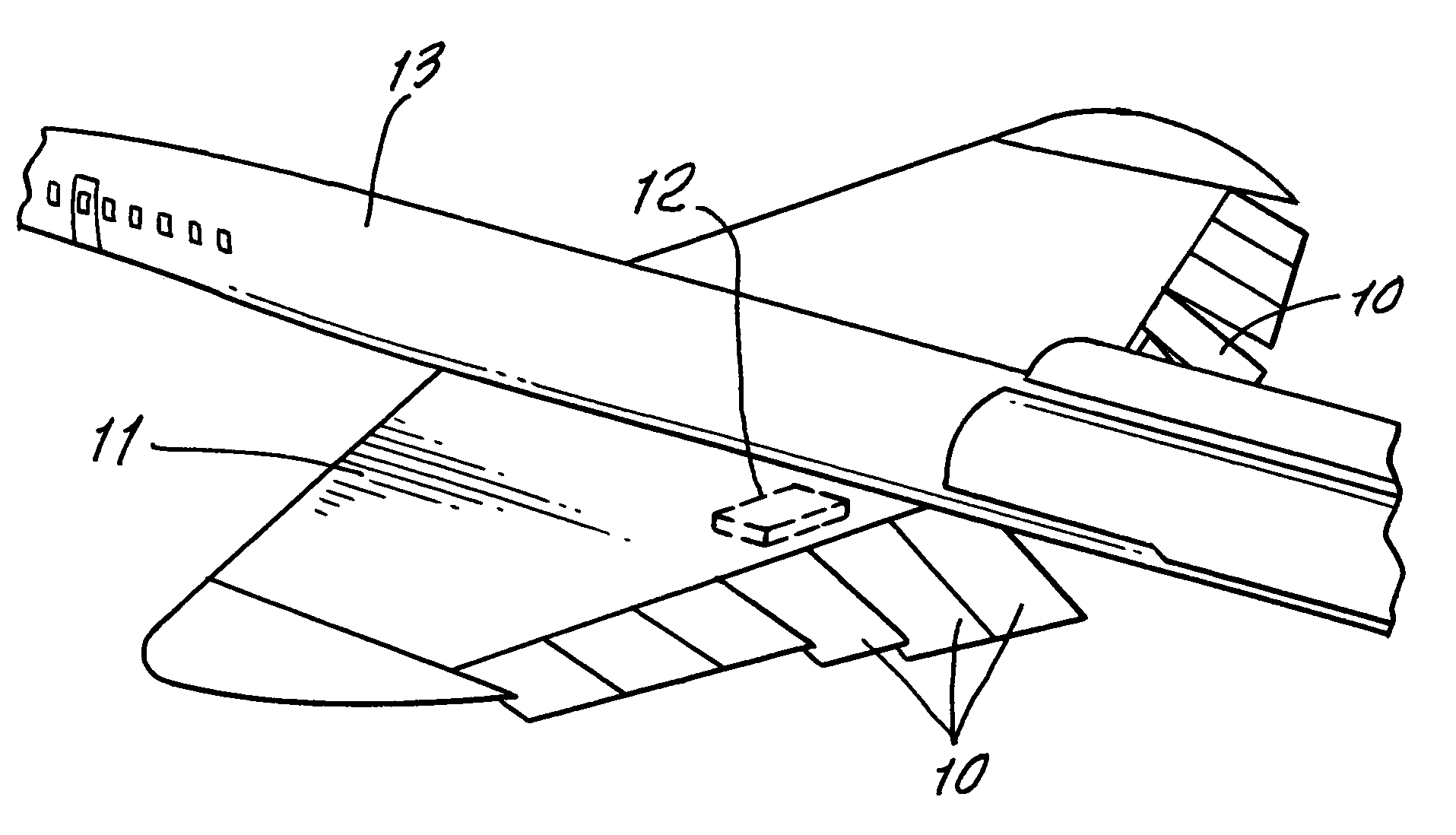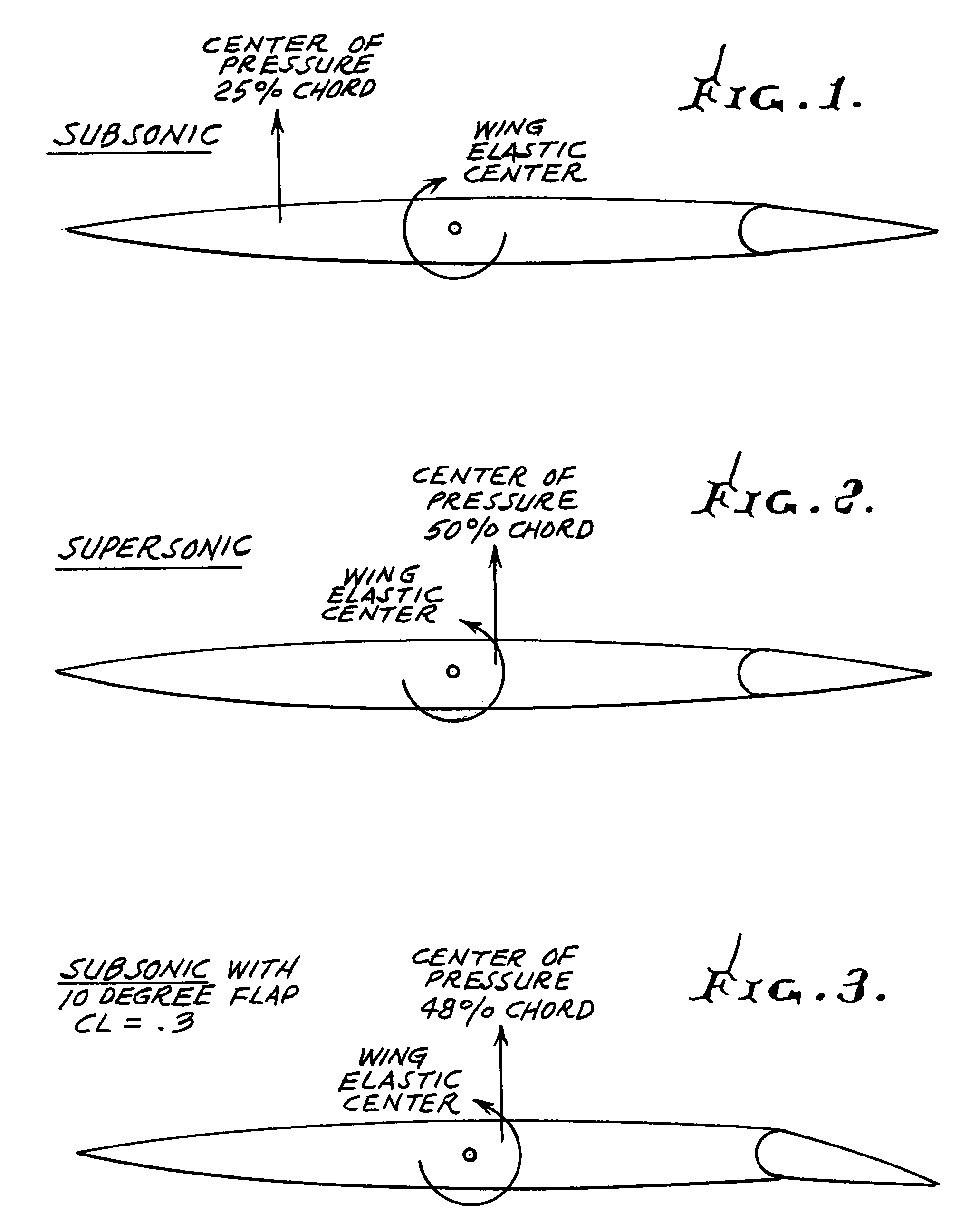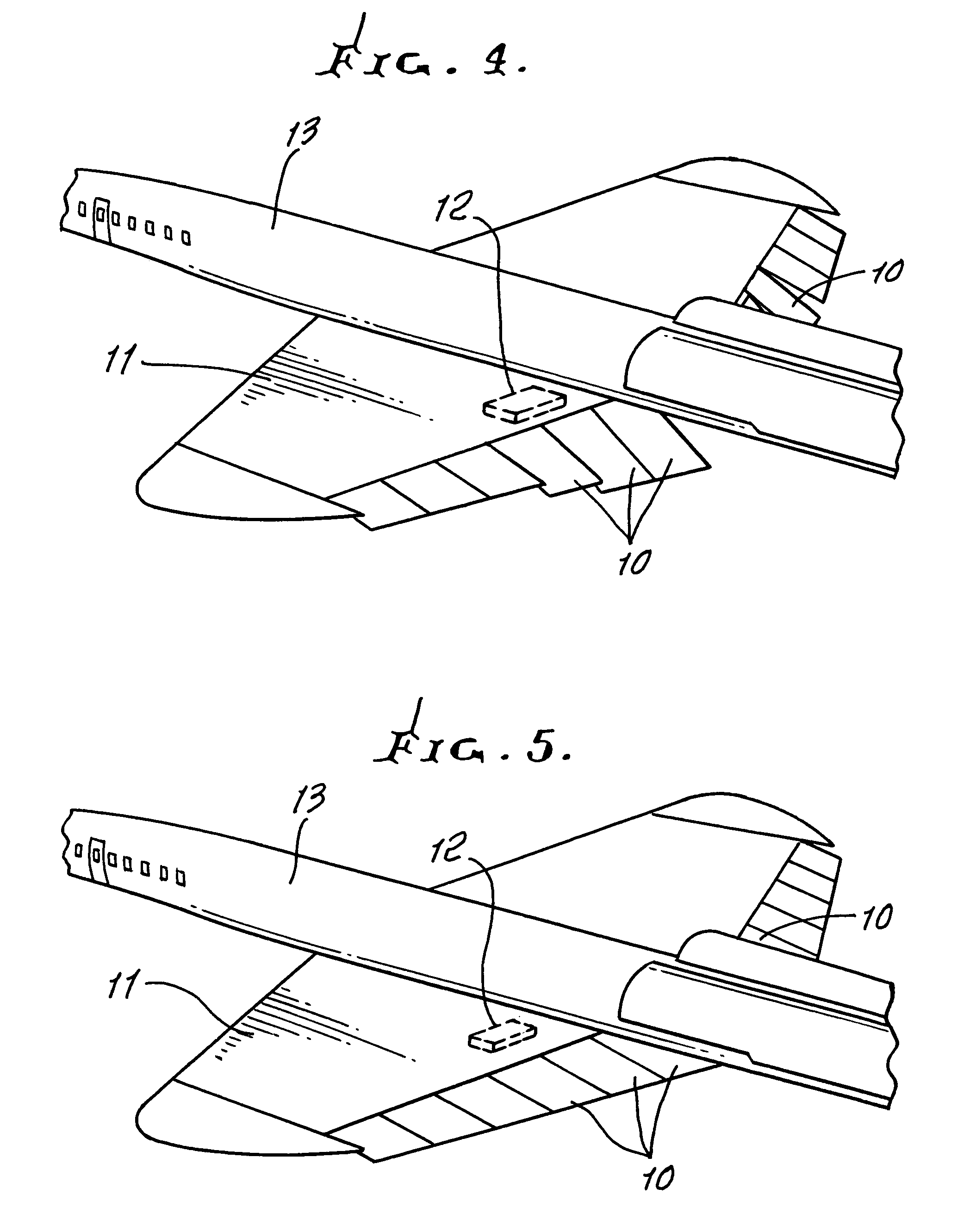Lift and twist control using trailing edge control surfaces on supersonic laminar flow wings
a supersonic laminar flow and control surface technology, applied in the direction of wing shapes, transportation and packaging, efficient propulsion technologies, etc., can solve the problems of creating undesirable control characteristics, and reducing the maximum achievable wing lift, etc., to achieve low torsional stiffness and low sweep angularity
- Summary
- Abstract
- Description
- Claims
- Application Information
AI Technical Summary
Benefits of technology
Problems solved by technology
Method used
Image
Examples
Embodiment Construction
[0022]FIGS. 1–3 illustrate the conditions referred to above. To repeat, supersonic aircraft designed with thin, low sweep wings designed for extensive natural laminar flow tend to have low torsional stiffness. In subsonic flight (see FIG. 1) the center of pressure is typically ahead of the wing torsional elastic center creating a moment twisting the wingtip to higher angle of attack—“wash-in”. At supersonic conditions (see FIG. 2) the center of pressure is much closer to the wing elastic center, reducing or reversing the “wash-in”. A wing with a twist distribution optimized for supersonic cruise will thus have significant “wash-in” at subsonic speeds. This induces pre-mature tip stall, reducing the maximum achievable wing lift and creating undesirable control characteristics, at stall.
[0023]The present invention provides trailing edge flaps 10 on thin supersonic wings 11 with deflections scheduled to simultaneously control wing twist and reduce drag when operated at subsonic conditi...
PUM
 Login to View More
Login to View More Abstract
Description
Claims
Application Information
 Login to View More
Login to View More - R&D
- Intellectual Property
- Life Sciences
- Materials
- Tech Scout
- Unparalleled Data Quality
- Higher Quality Content
- 60% Fewer Hallucinations
Browse by: Latest US Patents, China's latest patents, Technical Efficacy Thesaurus, Application Domain, Technology Topic, Popular Technical Reports.
© 2025 PatSnap. All rights reserved.Legal|Privacy policy|Modern Slavery Act Transparency Statement|Sitemap|About US| Contact US: help@patsnap.com



